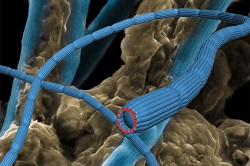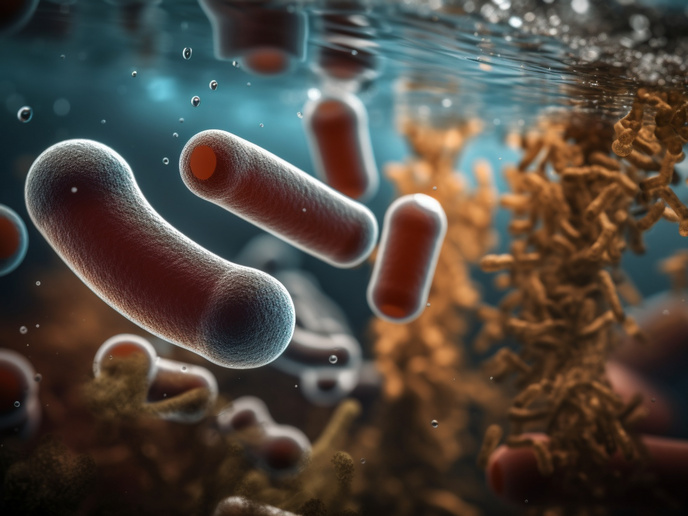Cable bacteria shaking up our understanding of nature
Not many scientists begin a research project by discovering an entirely new form of life with unheard-of properties. But this is the case for researchers working as part of the EU-funded COULOMBUS project which finished last February. Back in 2012, a student at Aarhus University in Denmark found himself looking down the microscope at cable bacteria, a daisy chain of cells several centimetres long, capable of conducting electricity up through sediments on the sea floor as if it were a living electric cable. Discovering more about this new life form, which has the potential to revolutionise our understanding of the cycling of elements in the eco-system and much more, has kept the team busy ever since. Mysterious electric currents At the outset, project coordinator Lars Peter Nielsen, professor of microbial ecology at Aarhus, was keen to explore what could be making the electrical currents he had detected in the Bay of Aarhus. His initial hypothesis — a community of bacteria arranged in some kind of nanowire grid — was quickly discarded when the cable bacteria came into focus under the lens. ‘Suddenly everything fell into place, it was a form of life no one imagined existed – a living organism that can conduct electricity over a large distance of centimetres. Until now you could only do this at the nano or the microscale,’ he says. The bacteria, members of the Desulfobulbaceae family, have a ring of electric wires inside. They absorb electrons from hydrogen sulphide in one end of the cable, transport them along thousands of cells up to the surface of the mud, and then deposit them onto oxygen at the other end. In the process, they release the energy they need to survive. On sea floors and in back gardens Using robots and a specially developed microsensor, the team measured electric fields from cable bacteria in the Bay of Tokyo and then in a stream, closer to home, in Professor Nielsen’s own back garden. They studied the bacteria’s DNA to find out about its evolution over time and have so far described two genera and six species while several others await further investigation. COULOMBUS’s more recent work in soil on land means ‘maybe our currents will be able to explain electrical fields that have been measured on land and couldn’t be explained before,’ says Professor Nielsen. How they conduct His team is now working on identifying what are the conducting electrons inside the bacteria. ‘Once we have found out what materials are involved, we may be able to start seeing what are the possible applications of this conducting mechanism,’ says Professor Nielsen. Knowledge about cable bacteria is still in its infancy but the implications of this discovery are likely to be far-reaching. The fact that it constitutes a living link between a conductor and biological processes is likely to be of interest to medical researchers, according to Professor Nielsen. Technologists may wish to explore its potential as a path towards green electronics. It could have applications in cleaning up contaminated groundwater. ‘Cable bacteria already make the sea bed a much better habitat for animals and gives them a better chance of surviving oxygen depletion,’ says Professor Nielsen. He is set to continue exploring the basic questions about cable bacteria at a new Danish-funded Centre for Electromicrobiology being set up at Aarhus University.
Keywords
COULOMBUS, cable bacteria, biogeochemistry, electric bacteria, new life form, conductors







